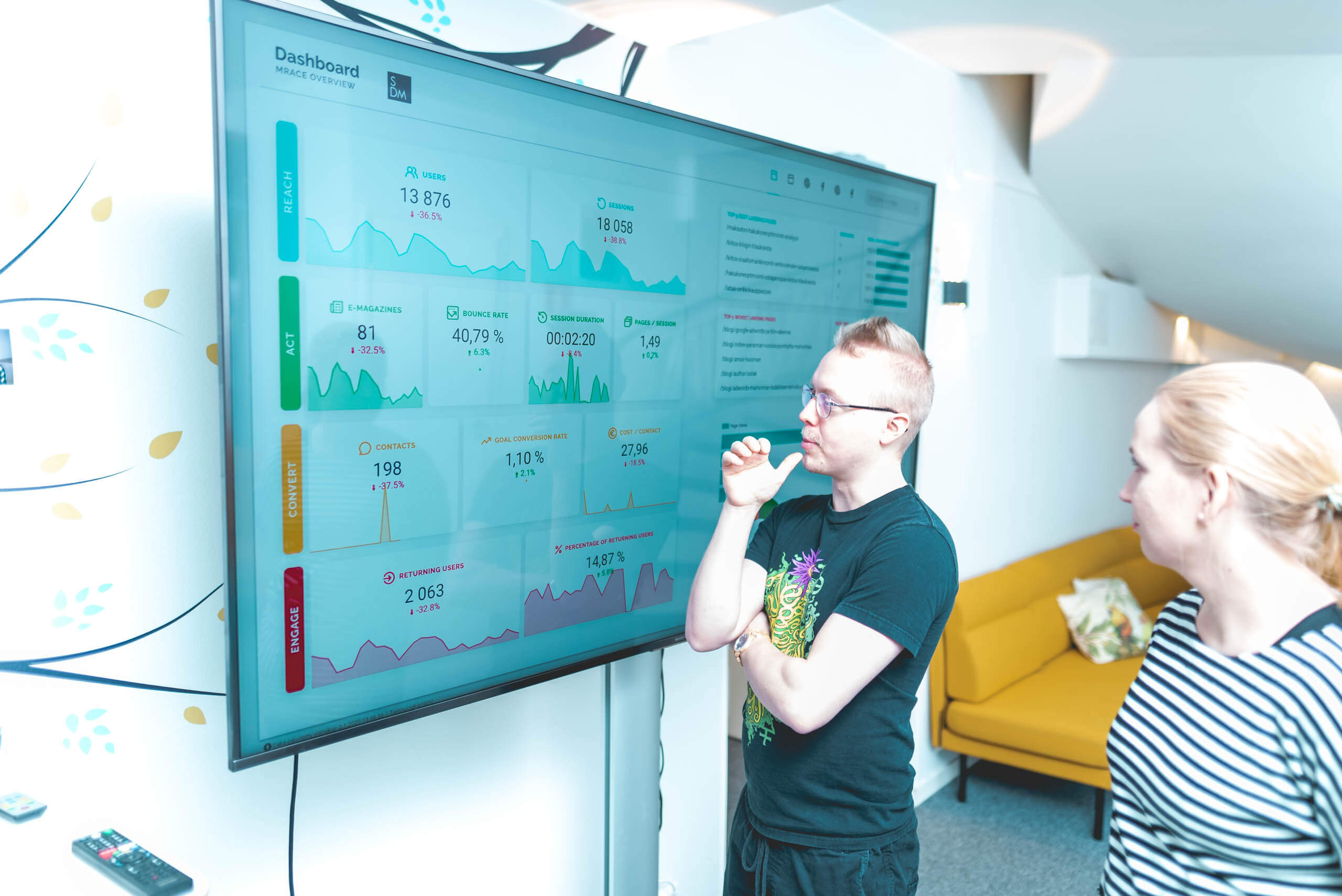In digital marketing, A/B testing is a familiar tool for many and one of the most essential tools for marketers looking to improve. At Suomen Digimarkkinointi, A/B testing plays a significant role in our MRACE®-model marketing strategy. All of our marketing efforts are based on data collection and continuous testing. In digital marketing, A/B testing is straightforward because every action can be measured clearly to determine what works and what doesn’t.
What is A/B testing?
As its name suggests, A/B testing is about comparison—finding the best-performing option through ongoing evaluation. It allows comparisons between two different versions of, for example, a website or individual advertisements. Post-test results show which version performs better in metrics such as clicks or sales. A/B testing enables better marketing decisions by providing evidence of what works best.
A/B testing can be applied to areas like Google advertising, social media advertising, and email marketing. For example, Google and Facebook’s AI-driven algorithms are valuable in testing.
Different landing pages are also worth comparing. While it’s possible to drive significant traffic to a website, poor conversion rates can result in minimal outcomes.
How does testing work in practice?
In Google Ads search advertising, A/B testing can be conducted with responsive search ads. Headlines and descriptions are added to responsive search ads, and Google’s AI identifies the most effective combinations based on data. Once the best combinations are identified, the top-performing ads are left running while new copy is created to replace ineffective ones. Display advertising allows easy testing of different messages using responsive display ads. Once the best-performing copy is found, it can be expanded into display network banners or programmatic advertising.
A/B testing benefits both e-commerce and B2B companies, regardless of industry. It also enables testing which type of message resonates internationally. For instance, we tested different ad copies for a B2B client in the UK using Google Ads Experiments. After a month of testing, one ad copy stood out based on its click-through rate. Following the test, the competitive advantage highlighted in the ad copy was incorporated into other marketing materials.
Without A/B testing, you might unknowingly continue using ad angles and copy that fail to engage your audience.
In email marketing, A/B testing can be conducted by sending slightly different copies and messages to divided segments or lists. Based on results, improvements can be made to email headlines, CTAs, and segmentation.
A/B testing can also compare different advertising channels, such as Google Ads, email marketing, or programmatic advertising, to determine which delivers the best ROI.
Don’t forget metrics and goals
While A/B testing can involve multiple metrics, it’s crucial to focus on one primary metric to keep measurements simple and results clear. At Suomen Digimarkkinointi, the MRACE® model serves as our guide, and A/B testing goals should align with the model’s phases.
In the Convert phase, the primary goal might be direct contacts and sales, which are straightforward metrics with a direct impact on cash flow.
For the Reach and Act phases, direct conversion goals might be too ambitious. Instead, focusing on metrics related to ad performance, such as clicks or click-through rates, is often more appropriate.
For instance, in the Reach phase, the goal might be to drive traffic to a website and test which ads attract visitors who stay the longest. These metrics can measure ad message effectiveness and alignment with the landing page content.
A/B testing should be continuous
A/B testing should be given enough time to generate meaningful data, avoiding premature conclusions after just a few days. In line with the MRACE® model, testing should be an ongoing process, not something to end too soon. We recommend testing ad copies for at least a month to gather sufficient data. Without A/B testing, you might halt the growth and development of your marketing.
Summary and the future of A/B testing
In the future, A/B testing will increasingly rely on AI. Many AI tools are already available for tasks like content creation, and they are expected to assist in ad design. Testing is an integral part of the MRACE® model because marketing cannot improve without experimentation.
Everything in digital marketing can be tested to discover the most effective channels. Especially in recent years, finding the most effective marketing strategies has become more critical than ever—a process best accomplished through testing.
If you’re looking to elevate your digital marketing efforts and leverage A/B testing for continuous improvement, let’s discuss how we can help you achieve your goals.



